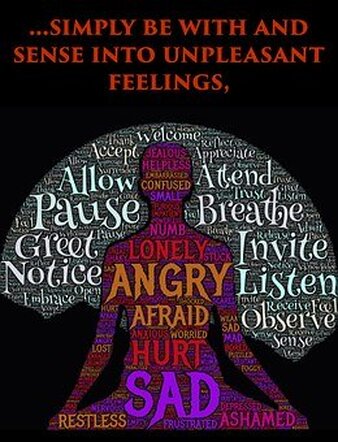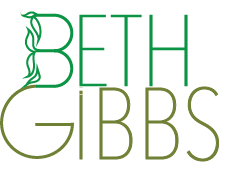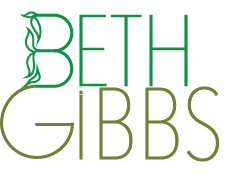ENLIGHTEN UP! a blogSelf-awareness stories: lighting our way to clarity, contentment and resilience in a complicated world.
|
 Photo Credit: John Hain Photo Credit: John Hain If I had to pick one of the five layers of self-awareness to focus on, it would be the Witness. Yes, the other four are important – you can’t live life without your body or your breath. You can live life without a fully functioning mind or your bliss but I would hardly call that living! Think of the Witness as your personal GPS system. It will point you in the right direction if you are able to engage it and allow its wisdom to shine the light of awareness on all that you are for understanding, acceptance and integration. The Witness is interrelated with, overlaps, and shares space with the mind. To visualize this, imagine two circles that overlap for 90% of their circumference, like a Venn diagram. One circle is the mind and the other is the Witness. Here’s an example that shows how they work together. A core belief that “I’m not good enough,” can exist in both the mind and the Witness but at different levels of awareness. In the Witness circle, “I’m not good enough,” might be seen, and sourced as messages of unworthiness from family, friends and the society at large for any number of reasons; race, gender, gender identification, class, physical or mental ability etc. In the mind circle, “I’m not good enough,” might be believed and expressed through depression, addictions and other self-sabotaging behaviors. However, the Witness seeing where it comes from, and knowing that the core belief, “I’m not good enough,” is not true, does its best to send that message to the mind through the overlapping space the two layers share. When the mind opens to receive the message, it may experience an Aha! moment of total understanding, or be able to acknowledge that the cause and source of the belief will need to be examined. In either case, steps can be taken to make a choice for positive change, keep the status quo with full knowledge of the consequences or find acceptance if change is not possible. For example, I once held the belief that asking for help is a sign of weakness. In my life this belief often co-existed with feeling angry, stressed, and overwhelmed with responsibility. When I finally reached my breaking point, my mind opened to the Witness. Only then was I able to trace that belief to its source. I remembered watching my mom, my Aunt Lucy, and my favorite cousin Ella, seemingly do it all. I watched them take on responsibility for family life, work outside the home, community involvement and church projects. The key word here, as you may have guessed, is seemingly. I am sure they could have used help, but I never heard or saw them ask for it. Why? I can guess. It might be that strong Black woman stereotype, the line from the Helen Reddy song, “I am woman, hear me roar,” or the independent, self-sufficient, caretaker gene that many of us carry. I’ll never know for sure. My mom, aunt and cousin have all passed and I can’t ask them. I was left dealing with a lingering and possibly unhealthy aversion to being dependent upon and feeling obligated to others. The witnessing process helped me understand where that belief came from and how it was manifesting in mental and physical discomfort. I was able to take mindful steps to transform it. I learned to think clearly about asking for help, and can now ask for and accept help with gratitude. I no longer believe that asking for help is a sign of weakness (well, most of the time – it’s a process). Waking the Witness and using it to help you navigate through life becomes especially important when you are dealing with difficulty, such as a chronic or terminal illness, facing the loss of an important relationship or responding to a global pandemic. Your ability to witness enables you to respond in a more wise, calm and balanced manner. Here is a practice to help you wake your Witness. Try it! Practice: Awareness of Sensation Sensation can be defined as an impression, perception or feeling in the body, such as tingling, pulsing, heaviness, firmness, tightness, ease, stretch, pain; a change of temperature or connection with a surface. Because the body speaks with sensation and is accessible through our five senses, awareness of sensation is an effective practice for witnessing. Note: It will be helpful to record the practice on your phone or tablet. Some like a slow deliberate pace and others may wish to move through the steps quickly. If you make your own recording, or have a friend make it for you, you can pick the pace that works best for you. Instructions To begin, take a position you can comfortably hold for three to five minutes. You can lie down as long as you remain awake. Close your eyes. If you choose to leave them open, soften your gaze or look down toward the floor if you are seated. As you move awareness slowly through the body, notice sense and feel any sensations that are present. If you catch yourself judging what you find – witness that. 1. Lower Body
2. Torso
3. Upper Body
4. Finish
With practice we can engage the ability to witness on a daily basis to bring clear, focused, attention to what we find in order to accept and integrate all aspects of ourselves, pleasant, and not so pleasant. Working with the Witness helps us move through our lives with clarity, contentment and resilience. Carl Jung said it best, “The psychological rule says that when an inner situation is not made conscious, it happens outside, as fate.”
0 Comments
 Photo: Emotions - Credit: John Hain Photo: Emotions - Credit: John Hain These are unsettling times. Our world is dealing with the corona virus pandemic, global warming, terrorism, the refugee crisis, and wars, both military and political. As a result, many of us are experiencing strong emotions. Two of the strongest are anger and fear. Anger can be described as a reaction to situations in which we see red, get seething mad, become fit to be tied, or hot under the collar. Anger can leave us feeling irritated, annoyed, frustrated, hateful or full of rage. In terms of the fight/flight response to stress, anger is the fight response – pushing us to fight our way out of whatever is happening. Fear is an uncomfortable feeling that results from something we recognize, or perceive as an immediate danger or threat. Fear can leave us feeling confused, insecure, anxious, frightened, panicked, or terrified. In terms of the fight/flight response to stress, fear is the flight response – pushing us to get as far away from the situation as possible. Both anger and fear can exist in us at the same time as a result of the same experience. Often it’s anger that masks fear, but sometimes the fear is felt first and masks the anger. These two emotions surface when we find ourselves facing situations that are unpredictable, uncontrollable or due to a long-term, unhelpful core belief. When we understand this, we can unmask the anger and the fear, face the cause and find better responses to whatever set us off in the first place. For example, when my car suddenly broke down on the highway some time ago, my reaction to this situation was clear and direct. First came anger in the form of frustration, irritation and annoyance as in, “Oh, (fill in your favorite swear word). Why now! I don’t need this headache. This (fill in your next favorite one or two swear words) car!” Close on the heels of this reaction, came insecurity, anxiety and fear as in, “No one’s here to help me. I’m alone. How am I going to get out of this? It’s probably going to cost a lot of money (fill in your favorite string of swear words).” Of course, it all worked out. When I calmed myself down, I walked off the next exit, found a gas station, had my car towed and a broken fan belt replaced. This was an unpredictable, uncontrollable event in which I experienced anger first and then the fear that came right along with it. The same reaction can be seen in situations where the emotions arise from a long-term, unhelpful core belief. For example, I’ve inherited a strong belief from the women in my family that independence and personal financial responsibility are important and if you are going to be in relationship with others, adhering to agreed upon commitments, especially around money, is non-negotiable. So, of course, I’ve been tested on that many times and in many ways. One of the most memorable was during my second marriage. We’d agreed on how our finances would be handled but my husband consistently broke the rules. This led to discussions, which led to arguments, which led to a final angry outburst, in which I suddenly connected my anger to a deep-seated fear of financial ruin, that would leave me broke, helpless and dependent. Realistically, there was no way that would happen unless the whole country went into a 1930’s-like depression. After all, I had my own bank account, sound financial investments and a rainy day fund. Once I ‘got’ that it was a perceived fear based on a long-term, unhelpful core belief, I was able to face it, trace it and replace it with clear boundaries and healthier responses when our agreed upon rules were ignored. Maybe it’s age, maybe it’s because I’m now happily single, or maybe it’s my yoga and meditation practice, but these days, my anger/fear stew is slower to reach the boiling point and easier to reduce to a simmer. Emotions are tools of the mind. They are neither positive nor negative. They just are. It’s how we acknowledge, manage and express them that make them helpful or unhelpful. We can unmask and manage our anger/fear stews by understanding the difference between an anger/fear event that can be fixed and forgotten, and a long-term, unhelpful core belief that needs to be faced, traced and replaced. Here’s a witnessing technique for body, breath/energy, and mind that helps unmask anger and fear. Instructions. 1. Physical Body: Bring yourself to a comfortable position seated, standing or lying down. Focus your awareness on your physical body and ask yourself the following questions:
2. Breath/Energy: Next bring your awareness to your breath/energy layer and ask yourself the following questions:
3. Mental-Emotional Layer: Shift your awareness now to your mental-emotional layer and ask yourself the following questions:
4. Finish
“Never let your emotions rule, but always let them testify.” ~Robert Brault |
Archives
July 2024
AuthorBETH GIBBS started her yoga practice in 1968, four months after her son was born and she’s been practicing ever since. She currently teaches all levels therapeutic yoga classes for adults, and specialty classes for seniors in the Hartford, Connecticut area. Beth is a certified yoga therapist through the International Association of Yoga Therapists and is guest faculty at the Kripalu School of Integrative Yoga Therapy. She writes for the blogs, Yoga for Healthy Aging, and Accessible Yoga. Her master’s degree from Lesley University in Cambridge, MA is in Yoga Therapy and Mind/Body Health. Categories |
|
|
Enlighten Up! a Blog
|
Copyright © 2023 Beth Gibbs

 RSS Feed
RSS Feed
